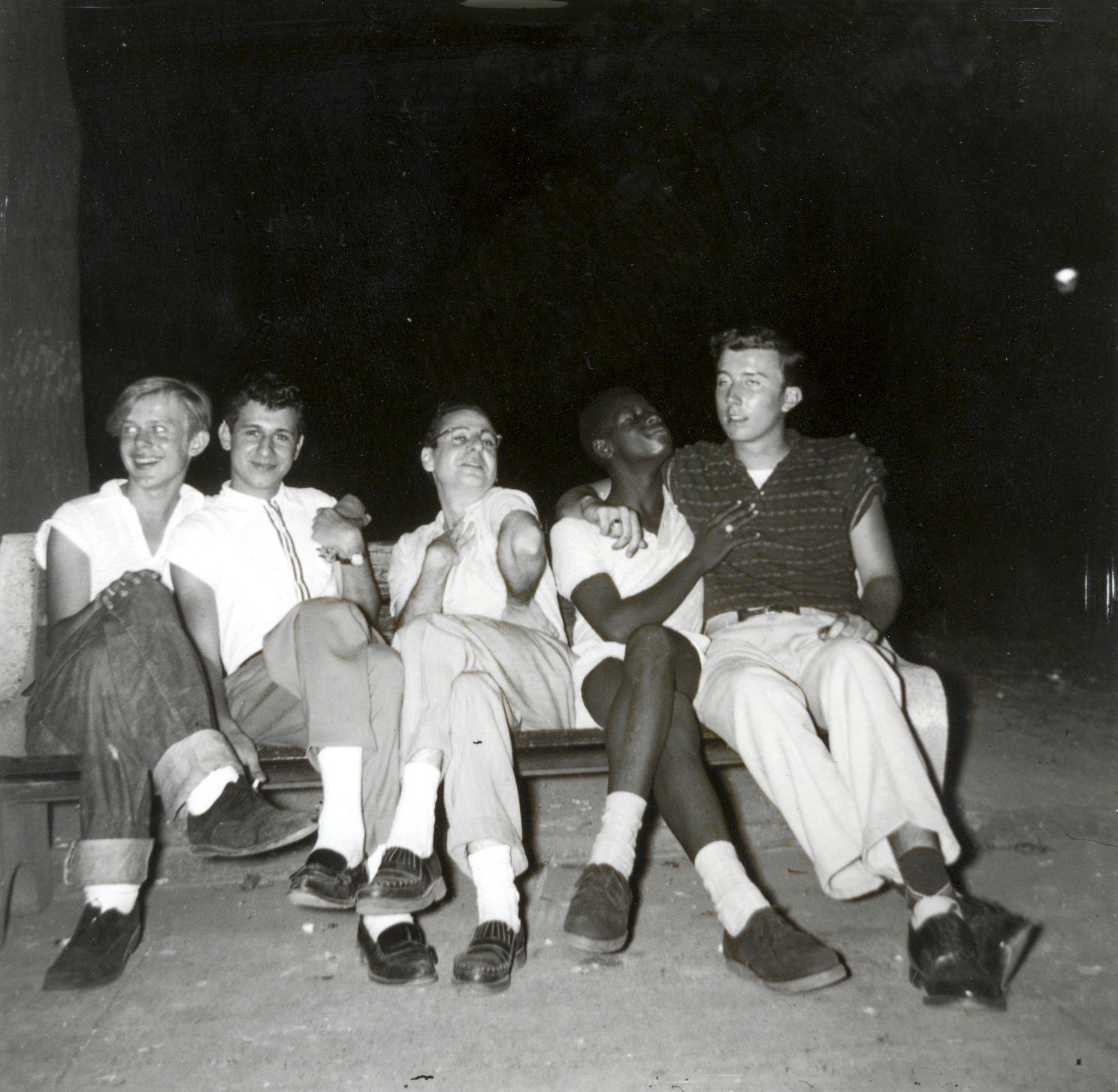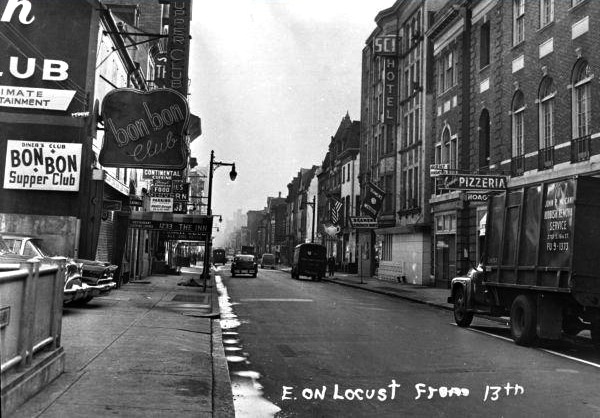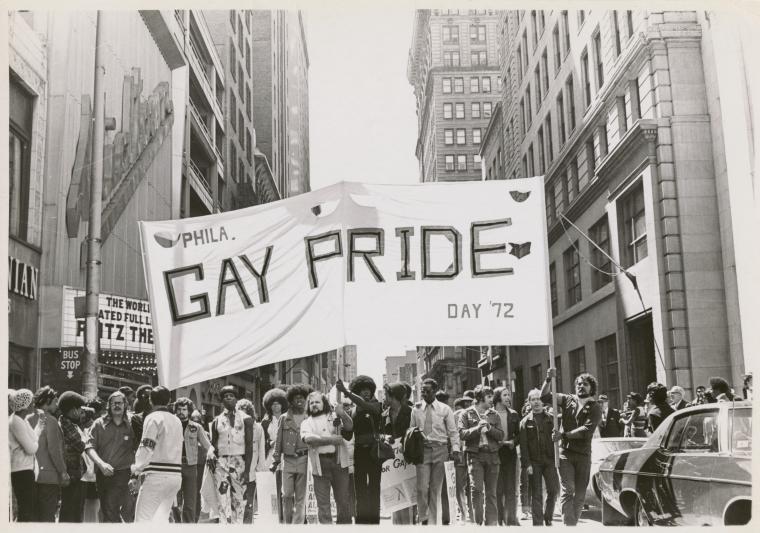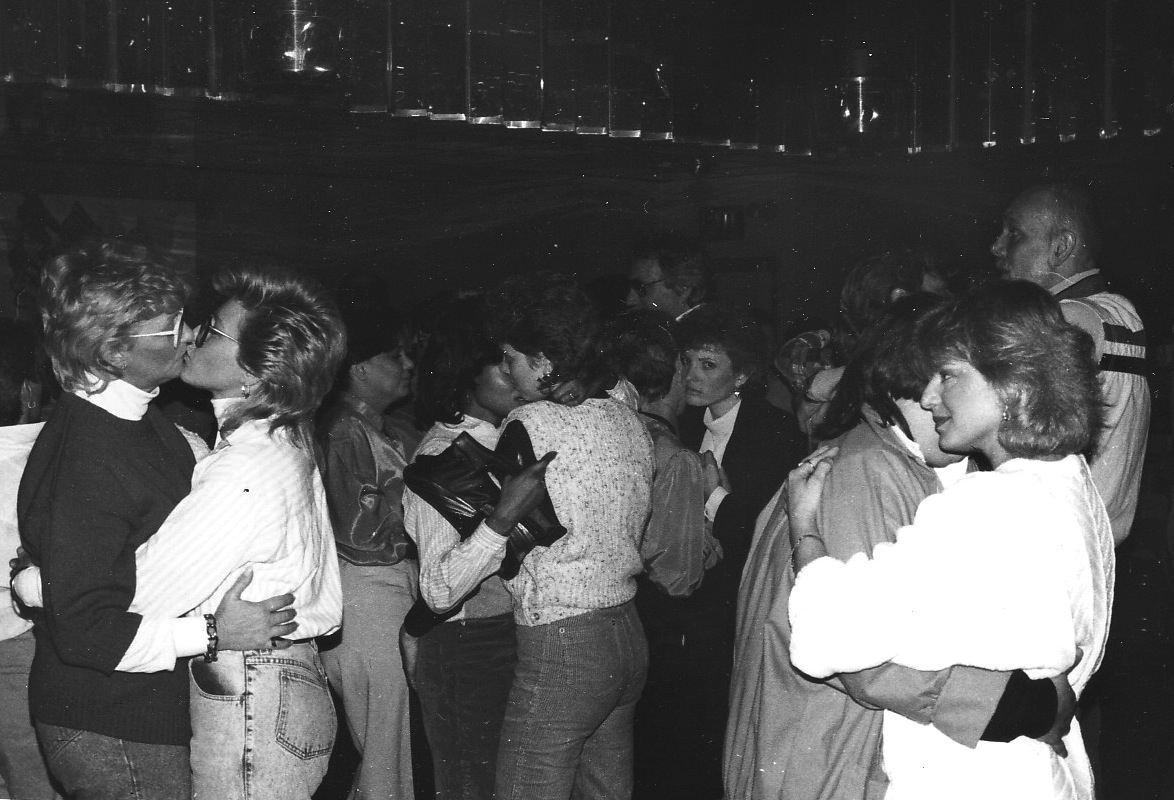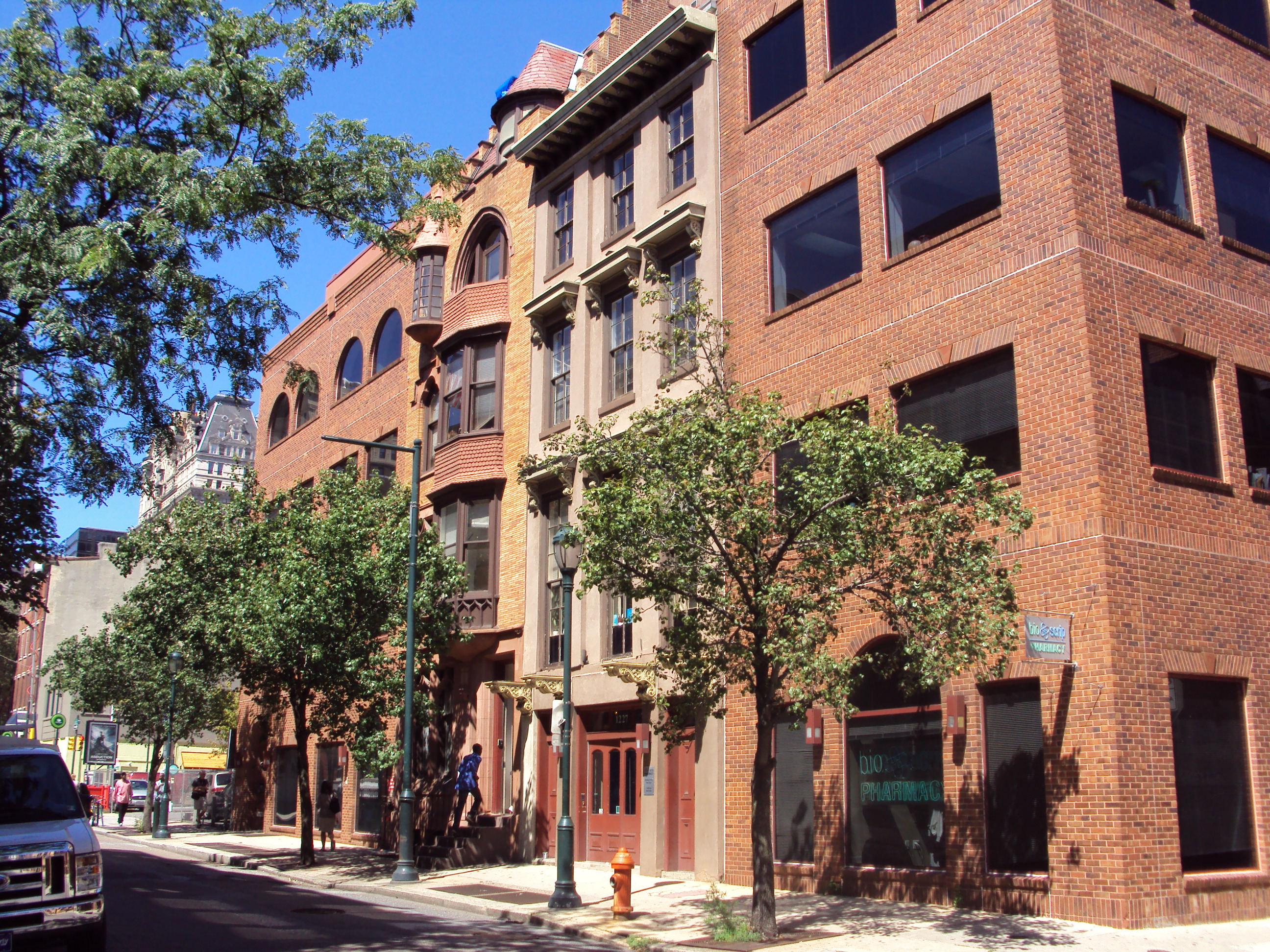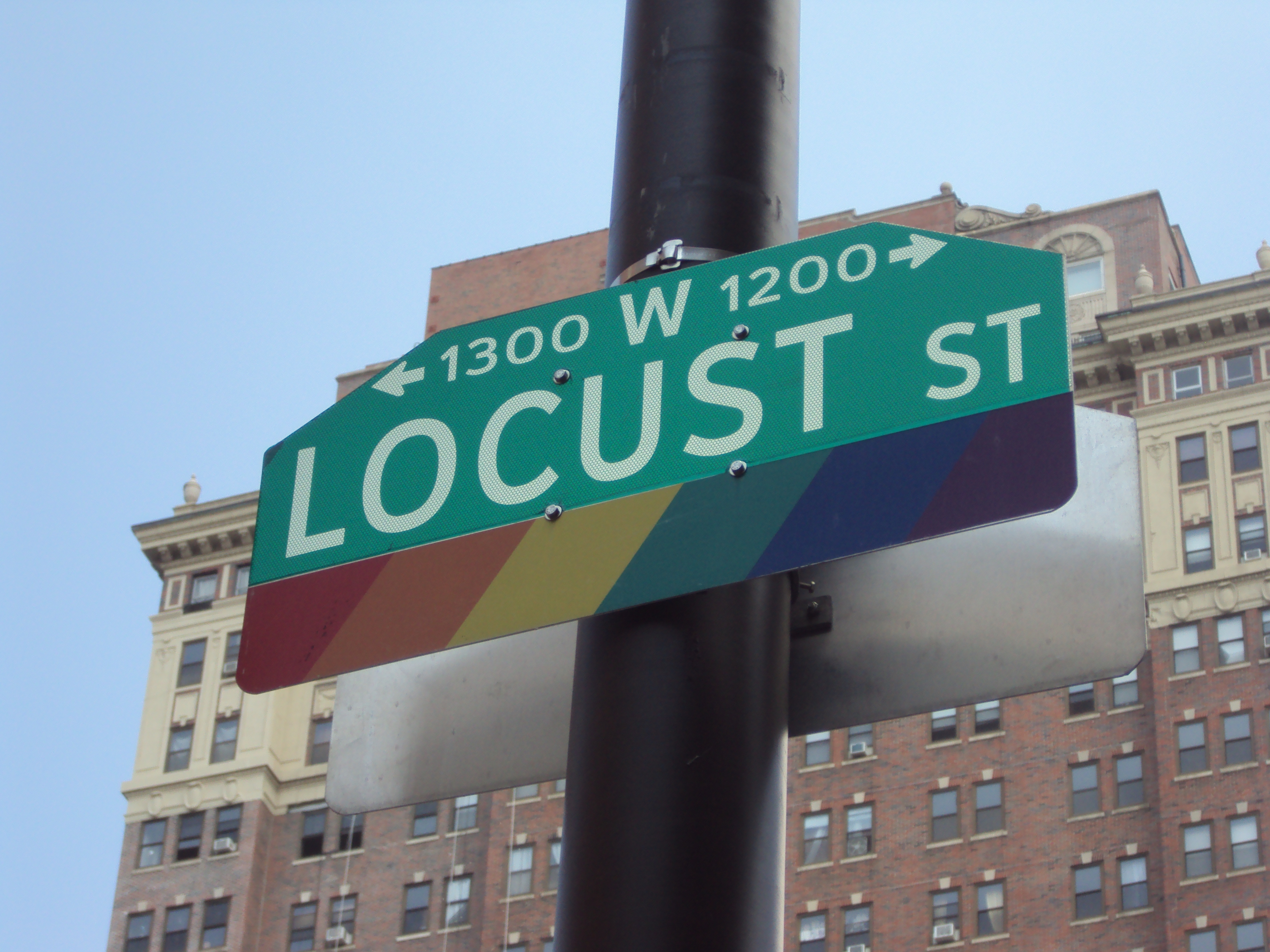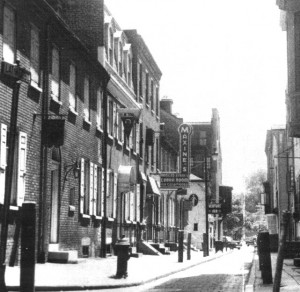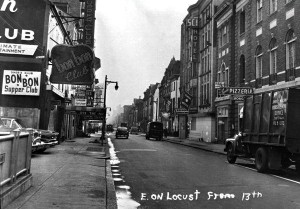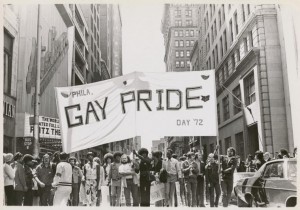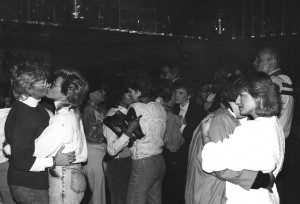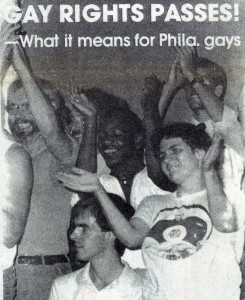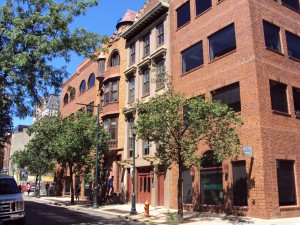Gayborhood
By Bob Skiba
Essay
In the second half of the twentieth century, the Center City neighborhood that became known as the Gayborhood formed in the vicinity of Locust and Thirteenth Streets. The community and the geographical spaces it occupied played a vital role in the social and political struggles of LGBT (lesbian, gay, bisexual, and transgender) people locally and in the nation.
After World War II, Philadelphia’s gay geography, like that in many American cities, expanded greatly. The war had uprooted millions of men and women across the country and exposed them to urban life here and abroad they had never seen before. Postwar downtown Philadelphia, or “Center City,” as it was beginning to be called, had the largest concentration of apartments and rental rooms in the “City of Homes,” providing gay men, lesbians, and transgendered people with the privacy and urban anonymity they sought.
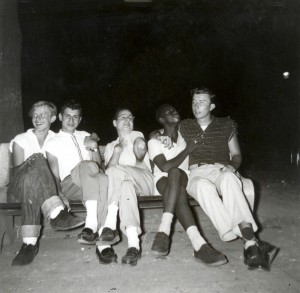
By the 1950s, Rittenhouse Square and the beatnik coffeehouses nearby on Sansom Street had become part of the public gay geography of the city. So many gay men moved into apartments south of the square that even straight people commonly referred to gay men who lived in Center City by the coded term “Spruce Street boys.” Gays, of course, lived all throughout the city, with a significant lesbian presence in the Germantown/Chestnut Hill area. In an era when racism extended even into the LGBT community, many African American gay men and lesbians socialized in bars or through private parties north of Market Street, in North Philadelphia, or across the Schuylkill in West Philadelphia.
The LGBT presence in Philadelphia became increasingly visible. In December 1962, Greater Philadelphia Magazine published an essay by Gaeton Fonzi (1935-2012) about the city’s gay community. Titled “The Furtive Fraternity,” it was the first article in the country about a city’s LGBT population to appear in a mainstream publication. The article mentioned a dozen or so gay bars and coffeehouses scattered along Spruce Street west of Broad and along the Locust Street area east of Broad. Fonzi also interviewed a handful of gay people, many of whom remained anonymous. Despite its semi-sensationalist subtitle—“Philadelphia’s homosexuals lead a strange twilight life outside the law and outside of society”— the story steered away from the lurid and focused instead on the problems of gay people in Philadelphia and the burgeoning gay political scene. Only a few years later, from 1965 to 1969, Philadelphia activists collaborated with groups in Washington, D.C., and New York to stage annual demonstrations for gay rights in front of Independence Hall.
The “Twilight Life”
The cliched “twilight life” described by early newspaper and magazine articles did have some basis in fact. Many gay men, lesbians, and gender-variant people who lived through the 1950s and 1960s experienced compartmentalized lives. They described themselves as being “straight during the 9 to 5 work week, but damned gay on weekends.” The parks, bars, and restaurants that crowded Center City streets provided semipublic spaces where LGBT people could socialize and be themselves.
A number of factors worked together to turn the few blocks that radiated from Locust and Thirteenth Streets into the neighborhood that became known as the Gayborhood. Close to the hotels and theaters on Broad Street, by the 1940s the Locust strip became a major center of Philadelphia nightlife. The street was dotted with nightclubs, restaurants, and musical bars that featured top national performers like Fats Waller (1904-1943), Ella Fitzgerald (1917-1996), and Patti Page (1927-2013). By the 1950s, however, some of the spots did away with the expensive first-rate entertainers and began featuring Las Vegas-style showgirls instead. As the character of the area changed, a few of the “musical bars” on the hidden, smaller streets like Camac and Quince began attracting a gay clientele and a few venues became predominantly gay.
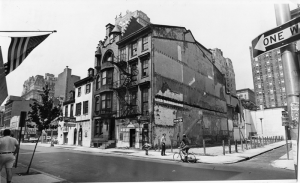
In the 1960s, the area declined. City planner Edmund Bacon’s (1910-2005) plans for Washington Square East and Washington Square West came to a halt in the late 1960s when federal funding dried up after his successful redevelopment of Society Hill. The city bought and demolished many buildings in the section that encompassed the emerging Gayborhood, but lack of funds left the area pockmarked with vacant lots and no real plan for development. By the late ’60s many of the musical bars and nightclubs degenerated into seedy strip joints with links to organized crime. The Philadelphia Inquirer began referring to the area as “Lurid Locust Street.”
To make matters worse, the construction of the Vine Street Expressway and the destruction of what had been Philadelphia’s Tenderloin district to the north pushed prostitution, gambling, and drug dealing down Thirteenth Street as far south as Locust. Police actions on area strip clubs led by then-Police Commissioner Frank Rizzo (1920-1991) usually included raids on gay bars, lumping prostitutes, drug dealers, and homosexuals all together as “undesirables.” Even gay and lesbian private clubs, incorporated to get around the city’s ban on same-sex dancing, were not immune. Police raids on gay bars were common well into the 1980s.
Demonstrations After Stonewall
The strip bars and “gentlemen’s clubs” kept the area depressed through the early ’70s, but the gay community was evolving rapidly. Philadelphia was not far behind New York in responding to the revolutionary call raised by the Stonewall Riots of 1969. Within a few years, Philadelphia saw the birth of several radical, new-left organizations including the Gay Liberation Front, the Gay Activist Alliance, and Dyketactics. In 1972, Philadelphians held their first Gay Pride demonstration, with an estimated 10,000 people marching from Rittenhouse Square to Independence Mall, signaling the end of a “furtive fraternity” and the beginning of a new, highly visible presence. The city’s LGBT community was out and proud. By 1976, gay Philadelphia had opened a gay community center on South Street, founded the Philadelphia Gay News, and began pushing for a citywide gay rights ordinance.

The new LGBT involvement in politics affected the geography of the Gayborhood. Gay spaces proliferated, with gay bars opening both east and west of Broad Street, along South and Front Streets, and in suburbs like Cherry Hill and Norristown. New African American bars opened along Arch and Filbert Streets, just north of Market Street, and along Broad Street in North Philadelphia. Many of the bars, restaurants, and shops in the Gayborhood advertised themselves as gay-owned and operated, and the first LGBT business associations were formed. By the end of the decade, city food writers attributed Philadelphia’s restaurant renaissance to its gay entrepreneurs.
As the 1980s began, the worst parts of Locust Street had been razed and rebuilt. When crime continued to be a problem in the area, particularly manifesting itself in violence against transgendered people, the community and business associations came together to form neighborhood watches to patrol the area. In 1982, the Gay Rights Bill that had stalled year after year through the 1970s passed in City Council with almost no opposition.
The devastation of the AIDS epidemic and horrendous loss of life in the 1980s brought the community together. When federal, state and local governments failed to respond, Philadelphia activists stepped up. They formed groups like ActionAIDS, Unity, Manna, ACT-UP, and the AIDS Law Project of Pennsylvania to promote AIDS education, to care for victims of the disease, and to fight for legislation and medical research.
The Gayborhood Gets Its Name
Center City’s gay neighborhood gained its name in 1995 at Outfest, a commemoration of National Coming Out Day, when David Warner playfully paraphrased the Mister Rogers children’s song and declared, “It’s a beautiful day in the Gayborhood!” The name stuck, and what had been a “gay ghetto” gradually became commonly known as the Gayborhood. In 2007, the city of Philadelphia installed thirty-six rainbow street signs in the area bounded by Eleventh and Broad Streets and Pine and Walnut Streets to honor the history and diversity of the area. In 2012, a section of Locust Street from Twelfth to Thirteenth Streets was dedicated as “Barbara Gittings Way,” in honor of Philadelphia’s pioneer activist.
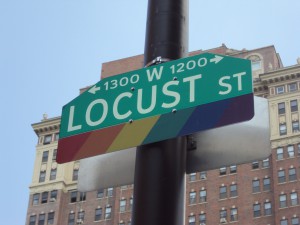
By the twenty-first century, the Gayborhood was anchored by the William Way LGBT Community Center on Spruce Street and Giovanni’s Room, the country’s oldest LGBT bookstore, on Pine Street. In February 2014, the John C. Anderson Apartments, Philadelphia’s only housing for LGBT seniors, opened on Thirteenth Street near Spruce. Farther north on Thirteenth, upscale sidewalk cafes have replaced the hookers and drug dealers. The building at Locust and Thirteenth Streets that once housed the All in the Family strip club became Nest, a play space for Washington West toddlers. A combination of political activism, business savvy, and community involvement have succeeded in transforming Philadelphia’s downtown gay neighborhood.
Bob Skiba is the archivist at the William Way LGBT Community Center and the President of the Association of Philadelphia Tour Guides. In 2013, he co-authored Lost Philadelphia, with Edward Mauger. Skiba maintains a Philadelphia Gayborhood history blog at http://thegayborhoodguru.wordpress.com/ (Author information current at time of publication.)
Copyright 2014, Rutgers University
Gallery
Backgrounders
Connecting Headlines with History
- Giovanni's Room to reopen as second Philly AIDS Thrift location (WHYY, August 22, 2014)
- Remembering 1965 Philly march that helped spark gay rights movement (WHYY, March 10, 2015)
- June a big month for gay and transgender rights in Philly, but LGBT director says work remains (WHYY, June 3, 2015)
- Modern progressive LGBT politics has roots in Revolutionary religion (WHYY, June 24, 2015)
- Supreme Court says same-sex couples have right to marry in all 50 states (WHYY, June 26, 2015)
- Marking 50 years of struggle and a week of equality, Annual Reminders to march again in Philly (WHYY, June 29, 2015)
- Historical marker dedicated to Delaware-born gay rights activist Gittings (WHYY, July 27, 2016)
- Citizens air Gayborhood racial grievances for Commission on Human Relations action (WHYY, October 26, 2016)
Links
- Development of the Gayborhood (Philadelphia: The Great Experiment)
- G Philly Blog (Philadelphia Magazine)
- LGBT Firsts In Philadelphia (Philadelphia: The Great Experiment)
- The Most Tolerant City in America (Philadelphia: The Great Experiment)
- One of the Most Infamous Quotes from City Council (Philadelphia: The Great Experiment)
- Philadelphia Gay News
- The Philadelphia Gayborhood Guru
- Philadelphia LGBT History Project (OutHistory.org)
- Phillesbian
- Punk Out
- The Roots of the Gayborhood, The Eve of A Milestone (Hidden City Philadelphia)
- The William Way LGBT Community Center
- Philadelphia LGBT Mapping Project (Google Map by Bob Skiba)
